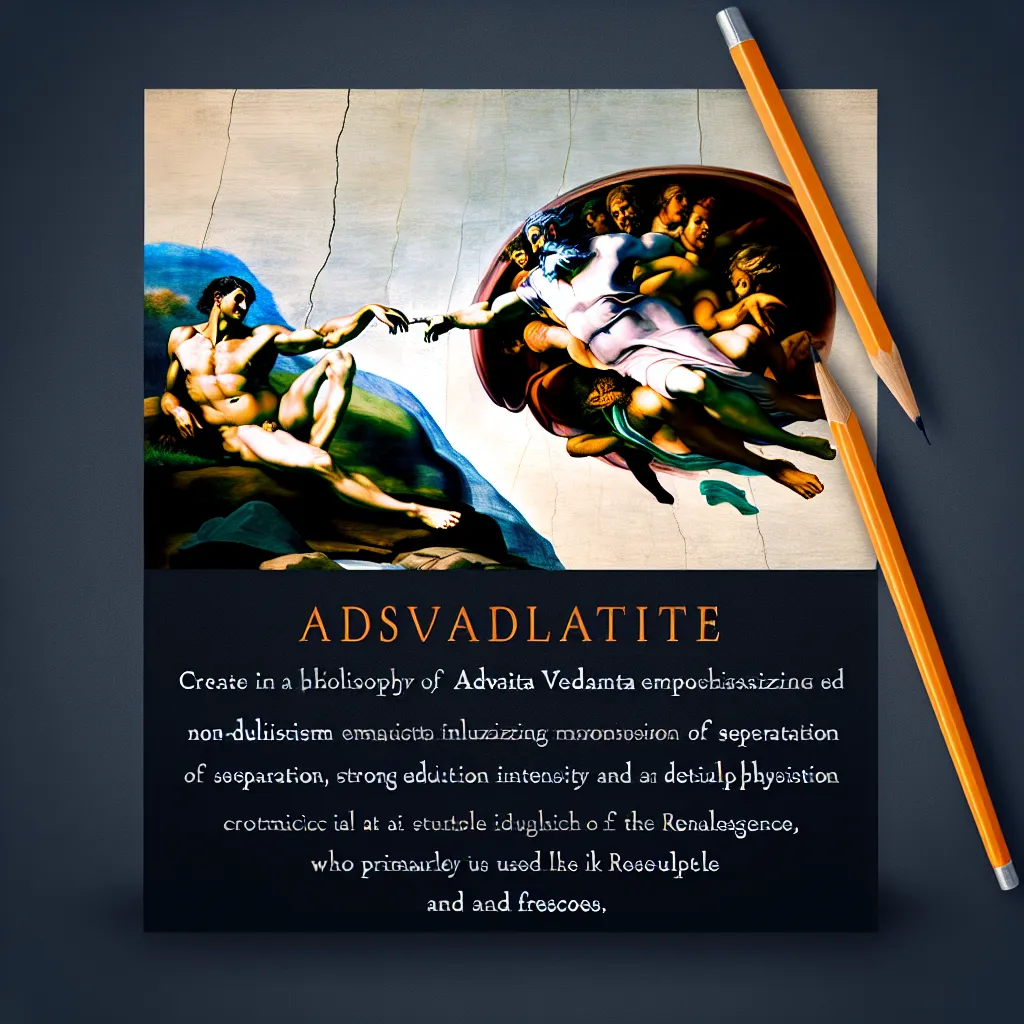
- Published on
- Authors

- Name
- You
The Philosophy of Advaita Vedanta: Non-Dualism and the Illusion of Separation
Advaita Vedanta, one of the most revered philosophies in Eastern thought, offers profound insights into the nature of reality and the self. Rooted in the ancient Vedic texts, Advaita Vedanta presents a cohesive vision of non-dualism—asserting that the individual self (Atman) and the ultimate reality (Brahman) are one and the same.
Principles of Non-Dualism
The central tenet of Advaita Vedanta is advaita—a Sanskrit term meaning "not two" or "non-dual." This philosophy posits that all perceived dualities and distinctions, such as subject and object, self and other, and material and spiritual, are mere illusions (Maya).
The Three States of Consciousness
Advaita Vedanta traditionally discusses three states of consciousness:
| State | Description | Significance |
|---|---|---|
| Waking | The everyday consciousness where one interacts with the external world. | Seen as the realm in which Maya is most potent. |
| Dreaming | The state where the mind creates a world of its own. | Demonstrates the mind's ability to fabricate realities. |
| Deep Sleep | The state of rest where individual awareness is absent. | Seen as a glimpse into the unity with Brahman. |
The Illusion of Separation
Maya and Avidya
Maya, often translated as "illusion," refers to the deceptive nature of our sensory experiences. According to Advaita Vedanta, Maya is powered by Avidya (ignorance), causing individuals to wrongly perceive plurality instead of unity. This ignorance manifests in the belief that we are separate from the divine Brahman.
Scientific Correlations
Interestingly, modern science has begun to touch upon concepts akin to Advaita Vedanta through quantum physics. The notion that particles can be entangled and have non-local effects challenges the classical idea of separateness and supports the Eastern philosophies of interconnectedness and unity.
The Nature of Self and Reality
Atman and Brahman
In Advaita Vedanta:
- Atman is the inner self or the spirit that resides within an individual.
- Brahman is the ultimate, unchanging reality amidst and beyond this universe.
The philosophy espouses that realizing the oneness of Atman and Brahman is the ultimate goal of human existence.
Self-Realization: A Spiritual and Scientific Perspective
The realization that Atman and Brahman are one is known as Moksha or liberation. This transcendent understanding frees one from the cycle of birth and rebirth (Samsara).
From a scientific perspective, the concept of self-realization can be explored through the study of consciousness. Contemporary neuroscientific research has started to investigate the nature of subjective experience and its relationship with the brain. This research increasingly points to the idea that our conventional understanding of self is a narrative constructed by the mind, echoing the ancient wisdom of Advaita Vedanta that the self is an illusion.
Practical Applications and Meditative Techniques
Meditation Practices
Several meditation techniques help align one's consciousness with these non-dual concepts:
- Neti-Neti Meditation: Means "not this, not that." Practitioners negate all names and forms, leading to a direct experience of the self beyond identification with body and mind.
- Vichara (Self-Inquiry): Popularized by Ramana Maharshi, it involves the contemplation of the question "Who am I?" to reveal the essence of consciousness.
Daily Practices
Understanding Advaita Vedanta principles can be implemented in daily life through:
- Mindful Awareness: Being present in the moment helps diminish the power of Maya by not getting entangled in past or future projections.
- Compassionate Living: Recognizing the unity of all beings fosters empathy and reduces conflict arising from perceived separateness.
Conclusion
Advaita Vedanta, with its rich philosophical and mystical tapestry, offers timeless wisdom that aligns surprisingly well with contemporary scientific discoveries. By bridging the gap between the esoteric and the empirical, it provides a holistic understanding of reality and the self. Embracing its principles can lead to a more integrated, compassionate, and enlightened existence.
"Tat Tvam Asi" – Thou art That.
Dive deep into these teachings and unravel the illusion of separation to experience the profound oneness that lies at the heart of existence.
